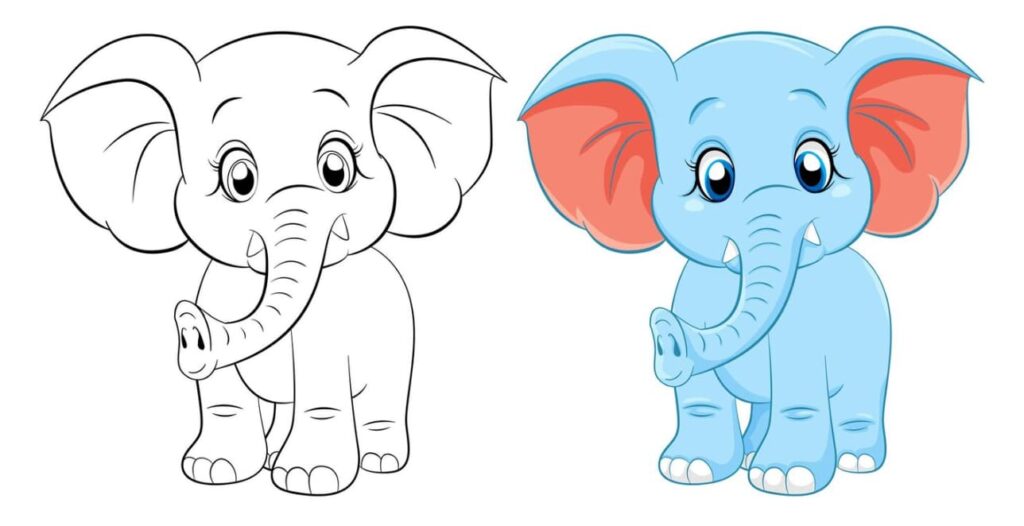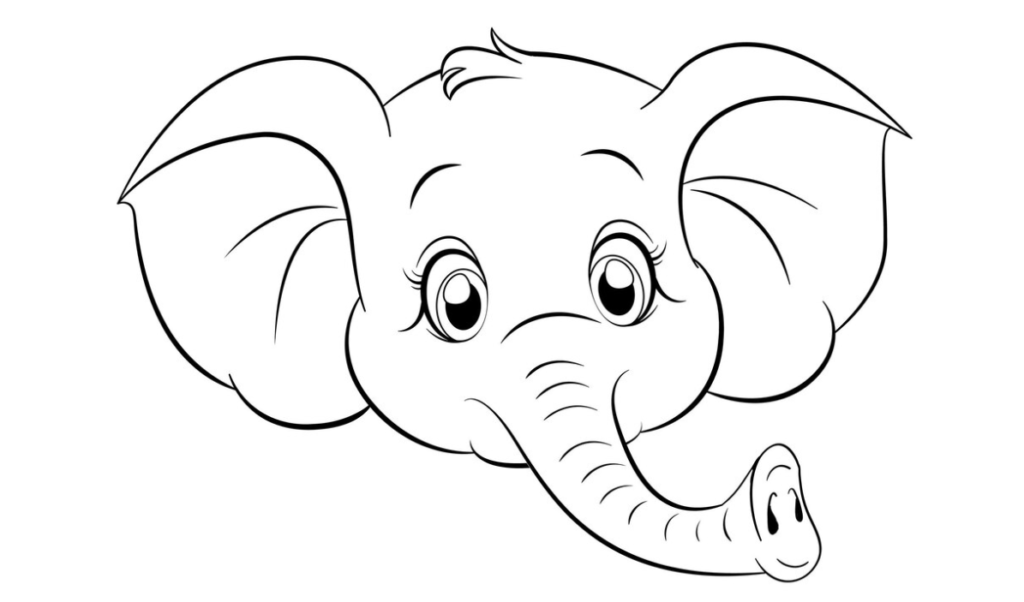This is a comprehensive, step-by-step tutorial focusing on drawing an elephant face. This tutorial meticulously breaks down the drawing process into three distinct methods, aiding in enhancing comprehension and fostering confidence. By adhering to the instructions provided, individuals can successfully render an engaging elephant face, thereby refining their drawing techniques.
Fundamental Information about Drawing an Elephant Face

This tutorial is a fountain of knowledge for anyone asking, “How can I draw an elephant face that’s both elementary and engaging?” It embarks on a journey to portray one of nature’s largest and gentlest creatures. The illustrated method concentrates on gentle curves and straightforward line work, ensuring an effortless learning experience for all.
The tutorial condenses the elephant’s face into its most endearing features, focusing on the playful elements—the glint in its eyes, the playful tilt of its trunk—that bring the drawing to life.
By the end of this lesson, you’ll have learned more than drawing an elephant face; you’ll discover the sheer joy of creating something touching from within you. It transcends the lines you draw; it’s about the bond you form with every stroke of your pencil. Let’s spark life into your artwork together.
Materials Needed for Drawing an Elephant Face
- Pencil;
- Paper;
- Eraser;
- Coloring supplies;
- Time needed: Approximately 25 minutes.
A Step-by-Step Tutorial on Drawing an Elephant Face
Without further ado, let’s dive into the step-by-step process of drawing an elephant face:
- Draw the head’s outline, depicting a rounded shape with a narrow top and wide sides;
- Sketch the eyes as two identical small ovals;
- Carefully depict one side of the trunk, ensuring you get the curve right;
- Draw the trunk’s other half by drawing a lengthy, rounded line from the trunk end to the eye;
- Add details like a small hole at the trunk end and create folds on the trunk’s surface;
- Sketch out the large ears on either side of the head;
- Draw the inner outline of each ear with smooth lines along the outer edge;
- Fix any inaccuracies and remove extra lines;
- Color the elephant’s face, ideally with a light gray. Color the eyes black and add highlights for a realistic look.
Exploring Alternative Drawing Techniques
In addition to the central lesson, we’ve uncovered various alternative methodologies for drawing an elephant face. These strategies will further develop your artistic skills, offering a diverse understanding of shape and shading. By experimenting with these methods, you’re broadening your artistic horizons and fostering your unique style.
Additional Practice: Adjusting the Elephant’s Ears
To deepen your understanding and honing your artistic skills, delve into the intricacies of adjusting the elephant’s ears. Experiment with various shapes, sizes, and angles, observing closely how each adjustment can dramatically alter the expression and personality of your elephant character. Consider elongating or shortening the ears, curving them inward or outward, or even adding subtle twists and bends to achieve different effects.
Pay close attention to the subtle nuances of emotion conveyed through these adjustments. Notice how a slight tilt or a gentle droop can imbue your elephant with a sense of melancholy or introspection, while a raised angle might suggest curiosity or alertness. Take note of how the position and orientation of the ears interact with other facial features, such as the eyes and trunk, to convey a cohesive emotional narrative.
As you experiment, keep a sketchbook handy to jot down your observations and document your progress. Don’t hesitate to make bold choices and explore unconventional ideas; creativity thrives on experimentation and pushing boundaries. By analyzing the impact of each modification on your elephant character’s overall demeanor, you’ll gain valuable insights into the art of storytelling through illustration.
The Role of Color in Your Elephant Drawing

Selecting the perfect shades for your elephant’s face is crucial in elevating the overall impact of your drawing. In this section, we’ll delve into the intricacies of color selection, providing you with a curated palette and detailed guidance on how to effectively apply color to bring your elephant’s face to life.
- Firstly, consider the natural hues of elephants for inspiration. Shades of gray, ranging from soft silvers to deeper charcoals, form the foundation of your color palette. However, don’t be afraid to introduce subtle variations and undertones to add depth and dimension to your drawing;
- Start by outlining the different areas of your elephant’s face – the ears, eyes, trunk, and any other features you wish to highlight. This will serve as a roadmap for applying color systematically and ensuring a cohesive look;
- For the ears, consider layering shades of gray to mimic the intricate texture and shading found in real elephant ears. Begin with a base coat of a lighter gray, then gradually add darker tones towards the edges and creases to create depth and definition;
- When it comes to the eyes, opt for a rich, dark hue to draw attention to this focal point of expression. Deep browns or blacks can add intensity and soulfulness to your elephant’s gaze, while a touch of white highlights can evoke a sense of luminosity and vitality;
- The trunk presents an opportunity to introduce warmth and contrast to your drawing. Experiment with earthy tones such as browns or tans, blending them seamlessly with the grays of the face to create a harmonious transition;
- As you apply color, pay close attention to light and shadow. Consider the direction of light sources and use lighter shades to highlight areas that catch the light, while darker hues can be employed to add depth and dimension to shaded regions.
Conclusion
And there we have it! A complete guide to drawing an enchanting cartoon elephant face. Remember, the techniques you learned from this guide can be used beyond elephant faces, opening a world of possibilities for you to explore.
